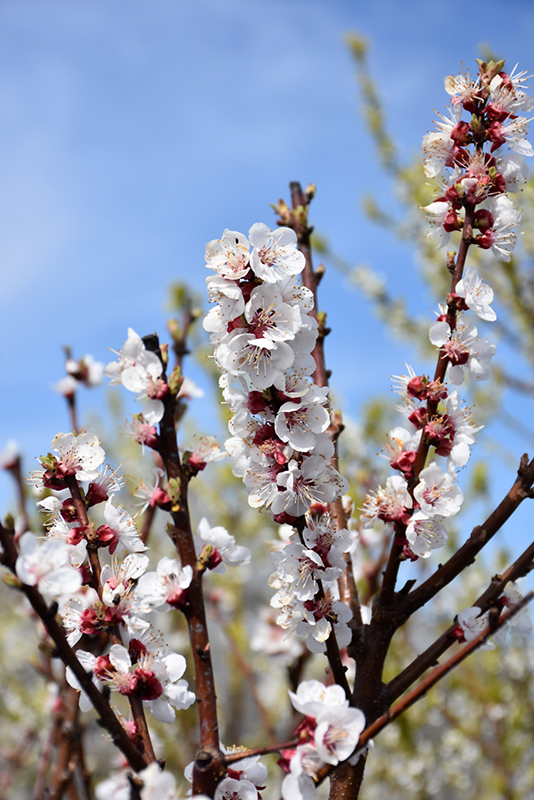Apricot, Tilton (Semi Dwarf) Prunus armeniaca 'Tilton (dwarf)' Height: 15 feet Spread: 15 feet
Sunlight:
Hardiness Zone: 5a Description: An attractive small fruit tree with showy white flowers in spring and large, firm, golden fruit with a red blush in mid summer; needs full sun, well-drained soil; an excellent pollinator; hardy, vigorous, adaptable and resistant to late frosts Edible Qualities Apricot, Tilton (Semi Dwarf) is a small tree that is typically grown for its edible qualities. It produces gold round fruit (technically 'drupes') with a red blush and orange flesh which are usually ready for picking in mid summer. Note that the fruits have hard inedible pits inside which must be removed before eating or processing. The fruits have a sweet taste and a firm texture. The fruit are most often used in the following ways: Features & Attributes Apricot, Tilton (Semi Dwarf) is draped in stunning clusters of fragrant white flowers along the branches in early spring, which emerge from distinctive crimson flower buds before the leaves. It has green deciduous foliage. The pointy leaves turn yellow in fall. The fruits are showy gold drupes with a red blush, which are carried in abundance in mid summer. The fruit can be messy if allowed to drop on the lawn or walkways, and may require occasional clean-up. This is a deciduous tree with a more or less rounded form. Its average texture blends into the landscape, but can be balanced by one or two finer or coarser trees or shrubs for an effective composition. This plant will require occasional maintenance and upkeep, and is best pruned in late winter once the threat of extreme cold has passed. Gardeners should be aware of the following characteristic(s) that may warrant special consideration; Aside from its primary use as an edible, Apricot, Tilton (Semi Dwarf) is sutiable for the following landscape applications; Planting & Growing Apricot, Tilton (Semi Dwarf) will grow to be about 15 feet tall at maturity, with a spread of 15 feet. It has a low canopy with a typical clearance of 3 feet from the ground, and is suitable for planting under power lines. It grows at a medium rate, and under ideal conditions can be expected to live for 50 years or more. This is a self-pollinating variety, so it doesn't require a second plant nearby to set fruit. This tree is typically grown in a designated area of the yard because of its mature size and spread. It should only be grown in full sunlight. It does best in average to evenly moist conditions, but will not tolerate standing water. This plant should be periodically fertilized throughout the active growing season with a specially-formulated acidic fertilizer. It is not particular as to soil type or pH. It is highly tolerant of urban pollution and will even thrive in inner city environments, and will benefit from being planted in a relatively sheltered location. This is a selected variety of a species not originally from North America. Special Attributes Growing fruit trees is a very tasty and rewarding food source, it does take time, energy and devotion to maintain so if you are up for the task. Apricot trees are an easier fruit to grow here in the Columbia Basin see our website, go to products then fruit trees click on Apricots for our care guide.![]()
![]()
![]()
![]()
![]()
![]()
![]()
![]()
![]()

